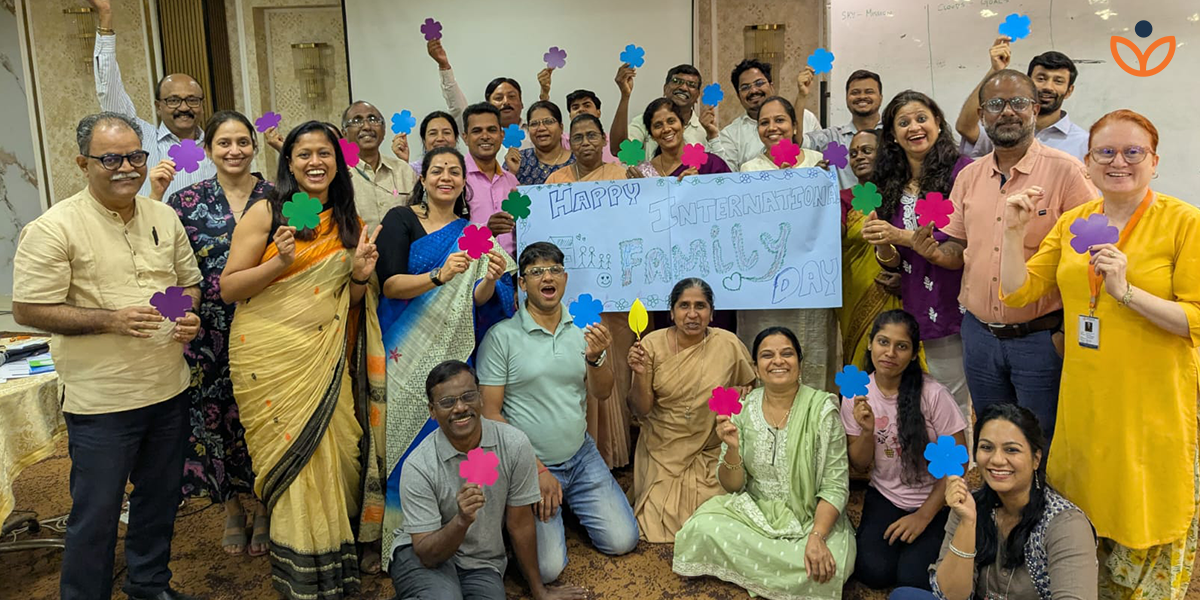
I woke up this weekend with this article on my mind. As our founder, Caroline Boudreaux, had talked about this in a Forbes article:
“Collaboration is like the scene in Finding Nemo when all the fish caught in the net swim down together. One fish alone can’t make a dent, but together, they change the course of everything.”
(Forbes Nonprofit Council, July 2023)
That image is one we carry in our hearts. Collaboration isn’t about perfection. It’s about choosing to swim in the same direction, again and again, even when it’s hard.
At Miracle Foundation India, we don’t just believe in collaboration, we depend on it. Our mission to ensure every child thrives in a safe, loving family cannot and will not succeed in silos. But let’s be honest: collaboration is not easy. It’s not a poster word. It’s a muscle. And building that muscle takes time, trust, humility, and a lot of uncomfortable conversations.
We’ve learned this the hard way. Bringing together people, partners, systems, and governments means bringing together differences. Different worldviews, different priorities, different speeds of working. There are days when collaboration feels like dragging a boat across land. But then there are days when that boat hits water and we move faster and further than we ever could alone.
Why Collaboration Still Matters
Because we are trying to solve complex, generational challenges. Child protection, family strengthening, and systemic reform are not one-organization problems. They require a coalition of government champions, grassroots NGOs, data experts, social workers, tech innovators, and most importantly – people with lived experience.
That’s why we continue to build collaborative spaces. We invite people in. We host dialogues. We create platforms like the Care Collective so that the child protection ecosystem can work together instead of working in parallel or in silos. We share tools, co-design frameworks, and ask more questions than we answer, because the work demands it.
And we know we wouldn’t be here without genuine partners. People like Isaac from Cornerstone, who made the bold and deeply personal decision to shift from running a Child Care Institution to becoming a champion of family-based care. It took our support and effort, yes, but it also took his complete commitment. His time. His willingness to rebuild everything he had stood for across 40 years. That kind of transformation is not easy. And we don’t take it lightly. We honour it. We hold space for it. And we continue to search for more such partners who are ready to lean into that kind of trust and change.
The Bright Spots That Keep Us Going
The Care Collective is growing across states. We just completed the 6th of the series of “The Leadership Dialogues”. It brings together lived experience voices, technical experts, on-ground practitioners, donors, and child protection officials. It is a space where people come not to compete but to learn and build together. And we are learning every day that collective energy is what drives systemic change. And we have partners who come in to share knowledge and expertise selflessly.
Organizations like Sonal Kapoor’s Protsahan and Pooja Taparia’s Arpan, Smarinita in IDR, Mark Riley from Hope and Homes for Children, Hugh From GSSWA, CRS/Changing The Way We Care, and many others we’ve met along the way, remind us what genuine collaboration looks like. No posturing. No territoriality. Just a shared belief that we are stronger together. That we don’t need to reinvent what already exists. That using each other’s expertise isn’t dependency, it’s intelligence.
It takes years of research, experimentation, failure, and rework to build a methodology or tool that truly works. So when someone shares that with you, it’s not a product. It’s a gift. Why would you not accept it? Why would you stand back?
And Then, the Hard Parts
Still, there are times when it’s disillusioning.
There are people who don’t respond or take many months to. Some shut doors that you’ve tried hard to give a little. Some offer tokenism as support. And we wonder, Why did it take so long? Why do we have to keep knocking? Why did the door close?
It shouldn’t be so hard to say, “We’re all on the same side.”
And there are other moments, quieter ones, that leave you wondering. I have often asked myself, privately and uneasily, if it’s a gender thing. Do women just understand better what it means to have each other’s backs? To be collaborative by nature, not as strategy but as instinct? I hope not. Especially not in a sector like ours, where empathy is supposed to be the baseline. But is it?
We work in a field defined by care. And yet, sometimes we see more competition than community. More branding than bridging. It’s painful. Because it slows down what really matters — getting children home, supporting families, and building stronger systems.
And Still, We Choose It
Still, we keep choosing collaboration. Not because it’s easy, but because it’s necessary. Because we’ve seen what’s possible when it works. Because the big dream, the one where every child grows up safe and loved in a family, demands more than any one of us can give alone.
So we show up, again and again. We open doors. We build spaces. We share what we’ve built. We ask, even when asking feels vulnerable. Because we’re not here to be the loudest voice. We’re here to be part of a chorus.
Collaboration is a beautiful mess. But we’re in it, eyes open, sleeves rolled up, hearts in. Are you?
Author: Kusum Mohapatra, CEO & Regional Director, Miracle Foundation India
Disclaimer: The views expressed in the article are the author’s and do not necessarily reflect those of Miracle Foundation India.
